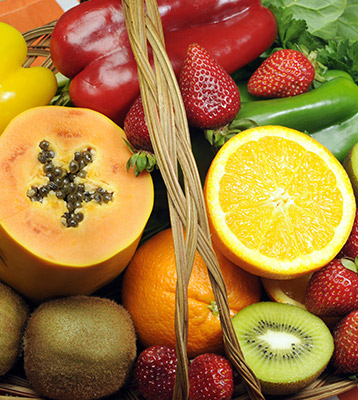Not just the pulse from a heartbeat, but an amazing group of heart healthy foods called pulses. Pulses are a term used for the edible seeds inside legumes. They include dry beans, dry peas, lentils & chickpeas (not included in this group are soybeans and peanuts, as they contain higher amounts of fat, while pulses have virtually no fat). I believe they are a highly underestimated food by most of us in North America. Their high nutritional qualities, their lower environmental impact, and their economical price make them a hugely beneficial food option from the meat and alternatives food group and they can be part of a healthy balanced diet.
Not only do pulses have high nutritional value & health benefits, but they are grown in Canada (mostly central Canada). Canada is one of the primary producers of lentils and is THE largest export producer of lentils (Canada produces 1,510,000 tonnes vs. India which produces 950,000 tonnes). Pulses are natural nitrogen-fixing crops that play a key role in crop rotation. They take less energy to grow than other crops, thereby producing fewer greenhouse gases. In addition to their lower environmental impact, they are an economically affordable source of heart healthy protein.
Including these into your regular diet will help increase your fibre intake, provide a plethora of different vitamins and minerals and by substitution reduce your meat intake; thus your saturated fat intake. Pulse flours, such as chickpea or black bean flour, are gluten-free and provide a nutrient rich alternative to wheat, oat or rye flours. Listed below are some of the many health benefits you may profit from.
Health Benefits:
- Very high in fibre: pulses contain both soluble & insoluble fibre which provide multiple different benefits. Insoluble fibre may help with digestion and regular bowel movements while soluble fibre has been shown to help lower cholesterol and blood lipid levels. High fibre diets may also reduce the risk of some cancers.
- Good source of plant protein: pulses can provide a complete protein when used in combination with grains, nuts or seeds.
- Low glycemic index: majority of pulse carbohydrates are fibre or slowly digested starch which can help control blood glucose levels (see post by Parasto explaining glycemic index/glycemic load).
- Help with weight maintenance: because pulses make you feel fuller for longer, this reduces the amount of food you have to eat/snack on.
- Low in fat and sodium: heart healthy attributes.
- Excellent source of folate and B vitamins. Folate plays a role in cell development (especially important during infancy and pregnancy) while B vitamins are essential for healthy functioning cells.
- High in potassium and various other minerals such as zinc, iron, magnesium and calcium.
- Gluten-free substitute: pulse flours can be used as an alternative to wheat flour for those who are gluten sensitive or have celiac disease. Many gluten-free products are made with refined flours & starch and tend to be low in fibre, protein, iron and B vitamins, whereas pulse flours can provide those nutrients.
*If it is new to include high fibre foods into your diet be sure to add them slowly and be sure to drink lots of water. A slow increase in fibre in your diet and rinsing your pulses before consumption will help reduce symptoms of bloating & gas.
Jessica Robertson
Registered Dietitian
Victory Health & Wellness
References
Pulse Canada. Pulses and the Gluten-Free Diet: Cooking with beans, peas, lentils and chickpeas. www.pulsecanada.com. Accessed October 2012.


